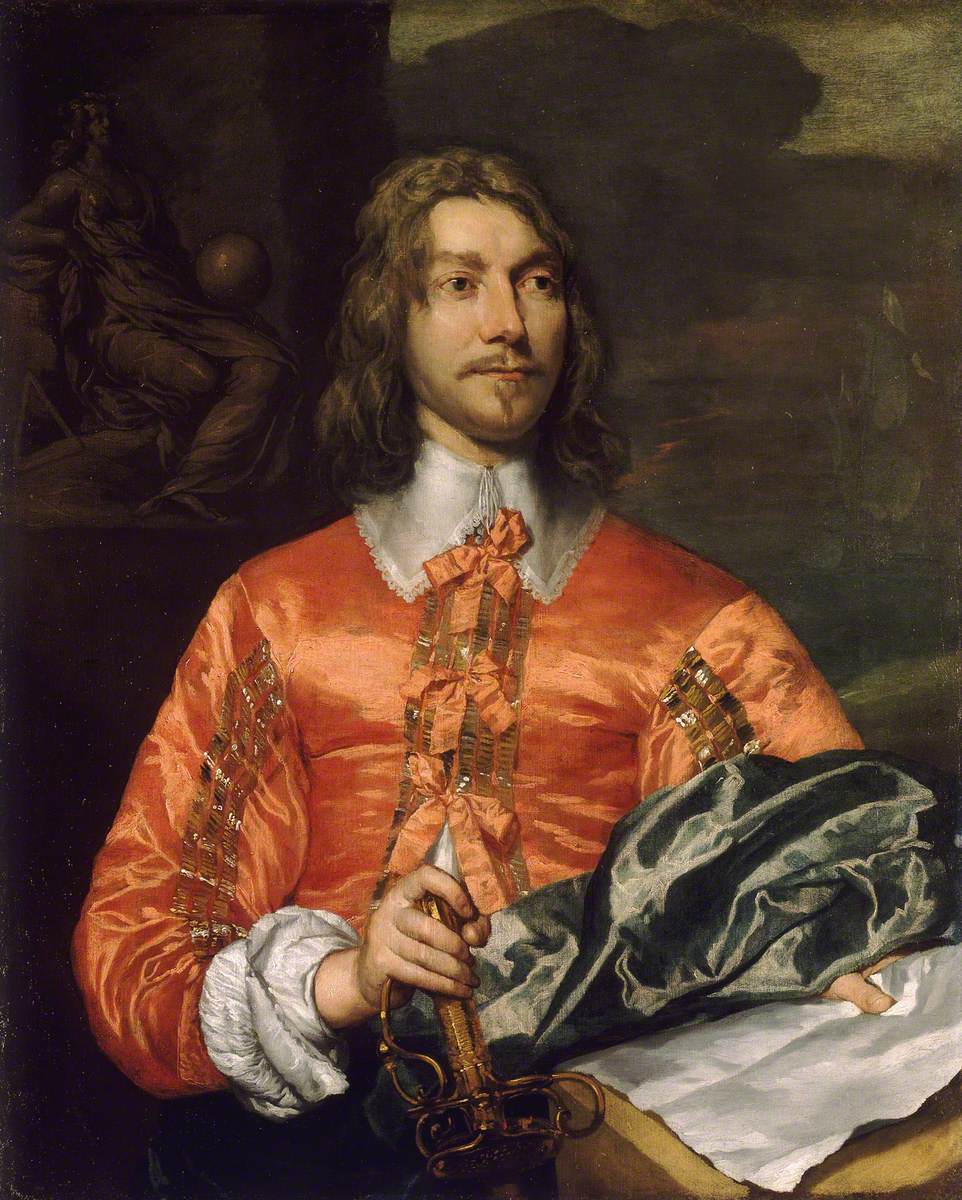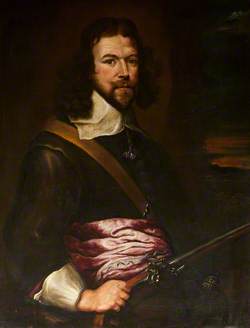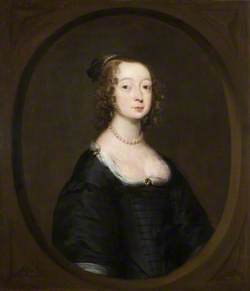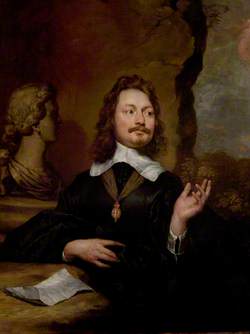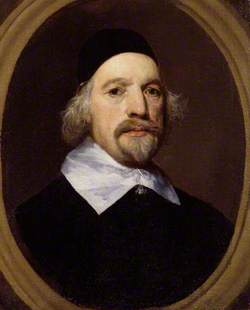How you can use this image
This image can be used for non-commercial research or private study purposes, and other UK exceptions to copyright permitted to users based in the United Kingdom under the Copyright, Designs and Patents Act 1988, as amended and revised. Any other type of use will need to be cleared with the rights holder(s).
Review the copyright credit lines that are located underneath the image, as these indicate who manages the copyright (©) within the artwork, and the photographic rights within the image.
The collection that owns the artwork may have more information on their own website about permitted uses and image licensing options.
Review our guidance pages which explain how you can reuse images, how to credit an image and how to find images in the public domain or with a Creative Commons licence available.
Notes
Add or edit a note on this artwork that only you can see. You can find notes again by going to the ‘Notes’ section of your account.
A half-length portrait of an unknown Royalist naval commander. He wears a salmon-pink doublet, with braid on the front and sleeves. Over his left arm, a drape of blue material, perhaps a silk cloak, may also symbolise the sea. He holds the hilt of his sword in his right hand. In his left hand he holds a paper, thought to be either a chart or his naval commission. Behind the sitter, to the left, a contrived sculptural relief of an allegorical female figure holds a globe and dividers. To the right of the sitter, a ship is faintly painted to denote his identity as a naval commander. Globes symbolized learning and scholarship, and with compasses and dividers, and other instruments, formed the attributes of geometry, one of the Seven Liberal Arts. In this sense it meant measurement of the Earth. Since navigation is based on geometry and its derivative, trigonometry, the iconography of the portrait's background suggests geography and also navigation, appropriate for a naval officer.
Although the artist's career was short, he succeeded Van Dyck as court painter following the latter's death in 1641. He was with Charles I at Oxford in 1642 and between then and his early death, aged 35 in 1646, he painted many of the Royalists. His portraits include the royal children and also three known ones of the king. The contemporary commentator, John Aubrey, called him 'the most excellent painter that England has yet bred'. The present portrait (and one of the king) were both included in the 1983–1984 Dobson loan exhibition at the National Portrait Gallery, which is the most recent major one. It was also in that at the Tate Gallery in 1951 (no. 22) and its previous private owner, Sir George Leon (d.1947), lent it to one at the Burlington Fine Arts Club in 1938 (no. 10). Leon had obtained it not long before, after it was purchased on the English south coast by a London frame dealer, since its fine auricular frame also appears to be original.
The museum purchased it via Spink's in January 1944, possibly from Arthur Tooth, the dealer with whom Leon seems to have placed it for sale in 1943. Fortunately it was at least not with Spink's when they were hit by a wartime air-raid on 25th February 1944, in which two other Caird Fund purchases (a portrait of Sir Walter Ralegh and a Battle of Solebay by Van de Velde the Younger) were lost.
An extended discussion (2019–2024) on the Art Detective pages of Art UK suggested the painting was possibly obtained from the family of Admiral Henry Killigrew (d.1712) by the Duke of Chandos in or after 1727 and thereby probably wrongly identified as Thomas Killigrew (d.1682, the playwright) after it was bought as 'Mr Killigrew' by Sir Paul Methuen of Corsham House (now Court) at the Chandos Collection sale of 1747. It was sold as Killigrew from Corsham in 1840 and equally wrongly suggested to be the Royalist soldier Sir Charles Lucas when resold at Christie's in 1842. It then passed rapidly via a dealer to the portraitist Frederick Richard Say (1804–1868), since Henry Pierce Bone exhibited an enamel miniature copy of it (as Say's) at the Royal Academy in 1843 (no.1097). The 1904 Graves listing abbreviates the original 1843 RA entry, which in full reads 'Lieut. Charles Lucas, enamel, from the original by Dobson, in the possession of F. R. Say, Esq.; formerly in the Corsham House collection'. The 'Lieut' in the 1843 RA catalogue later copied by Graves was probably a transcription error. The Bone miniature is now in the Walters Art Museum, Baltimore (WAM 38.99). The painting's pre-Chandos and post-Say provenance into the early 20th century is still uncertain.
Title
Portrait of a Royalist
Date
c.1643
Medium
oil on canvas
Measurements
H 96.5 x W 77.5 cm
Accession number
BHC3133
Work type
Painting
Art Detective discussions
Closed 41 comments
Who is this Royalist naval commander painted by William Dobson (1611–1646)?
Through Art Detective, you can help us to discover more about this artwork. Public collections around the country have many more artworks in need of research. Find out how you can get involved.
